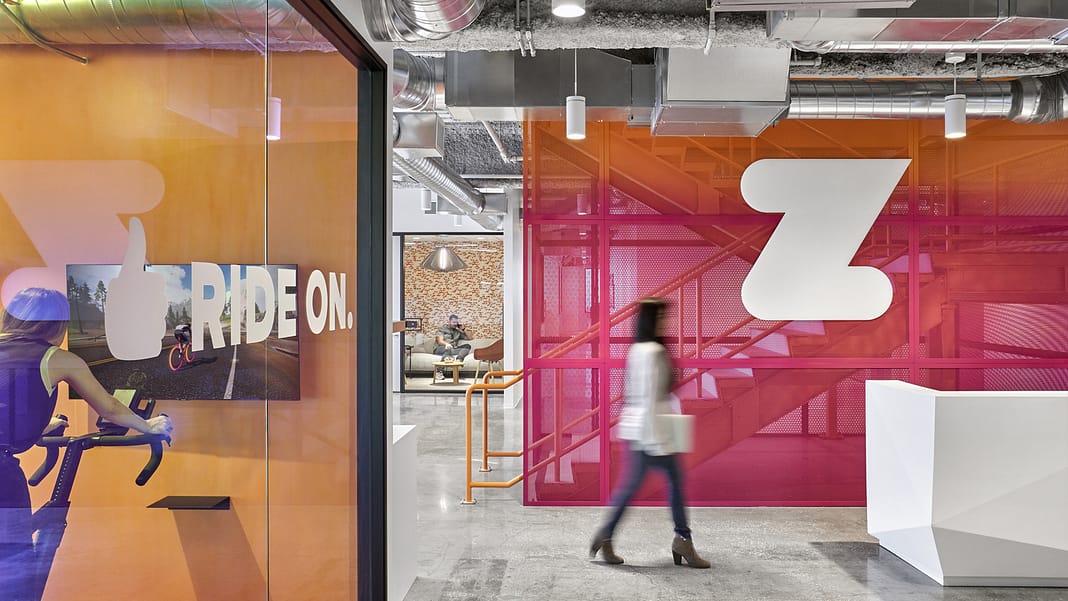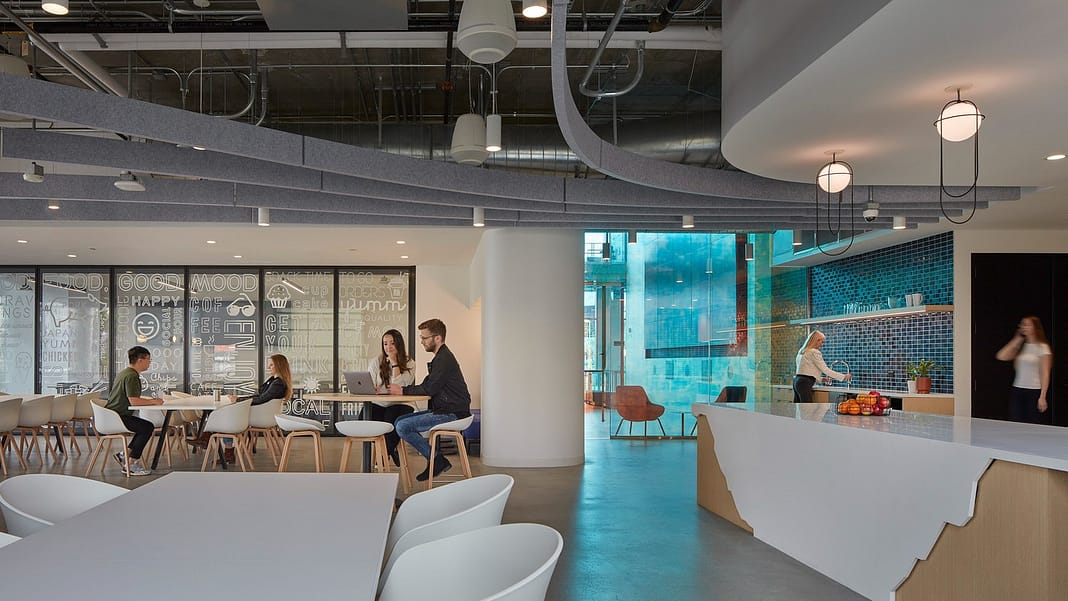By Julia Fuller and Alex Carmer
Pervasive, impactful, highly profitable, gaining momentum every year, with a transformative boost sure to come from the developing Metaverse—gaming is a phenomenon on every continent. And designing for these creative enterprises presents a special set of circumstances and considerations that affect this dynamic industry’s work environments.
Foremost among those considerations is security, with anecdotal stories of competitor drones hovering outside second story windows mining for proprietary secrets that will affect existing or new game design. From the distance between workstations and the building envelope to window treatments and protected screens, security is critical. The shielding of specialty studios within a floorplan as well as the engagement of celebrity actors on site requires additional layers of vigilance and planning.
Furthermore, in this highly competitive market, multiple brands or even separate entities under a single corporate umbrella often share the same facility yet remain discrete, almost competitive, making internal security an additional consideration. Within an overall design, each entity might have its own space, lobby, collaboration zone, work area, dedicated studios, and pantry customized to express its unique work and persona. Given the elevated level of security this industry requires opportunities to photograph project designs are almost nonexistent.
In terms of workspace layout, game designers understand the language of interiors. Working with 3D environments, they think and see like we do. Reviewing a floorplan, they easily understand the implied dimensionality and are quick to ask how the space might look and be experienced from various angles, a skill unique outside the design and architecture industry. And they engage with the design process, often pushing projects beyond the reasonable reach of budget and extending schedules to accommodate modifications. Design for them is an on-going procedure that persists even during construction.
Programs for the gaming workplace are challenging, embedded with specialty spaces—dedicated studios for motion capture or facial scanning, voice over booths, light rooms, edit bays, viewing rooms, audio studios, full performance stages, and more, each with specialized needs and security requirements. The bigger the company, the greater the array of studios. And, as expected, the infrastructure for game development is technology heavy, a plethora of cables requiring innovative solutions.
Appealing and inspiring, the workplace creates an environment for the bold, arresting excitement on developers’ screens as well as the concomitant buzz it generates. In term of aesthetics, these clients are impressive on every level. Taken directly from the games and sometimes iconized as in-house museum quality installations to showcase brand, the quality of art produced by their graphic teams is sophisticated and dynamic.
A decade ago, moody spaces cluttered with memorabilia from Electronic Entertainment Expos were the rule, the emphasis on investing in technology to best support developers. But the industry has evolved. To attract/retain talent that might be tempted by other tech companies or markets, the big push is for impactful environments with all the attributes currently in demand—bright, airy, upbeat, welcoming, featuring green spaces, plants and natural materials.
In this highly lucrative industry, magnetizing talent means upping both design and employee support. With that objective, most gaming companies provide dining services for employees every day, a convenience necessitated by the way developers work. Gaming creation is based on deadlines, and as projects enter their final phase, teams may work 60-to-80-hour weeks, pretty much living at the workplace. Exemplifying that point, IA is currently designing a massive full-service café with stunning outdoor patio for a confidential gaming client. And amenities can be plentiful, including game rooms, fitness centers, open-air spaces, pantries and multi-purpose spaces for large gatherings and social events.
For the IA team the complexities and demands of designing for the gaming industry are engaging, the work a joy. Early on, our designs for television and film production studios segued IA’s entrance to working with this industry. Today the questions we ask at project initiation and the ideas we bring to the table help gaming clients identify potential sites or envision renovations, ensure not just the best choices but the right ones, and realize optimum environments for game development. But if perchance aesthetic proclivity inspires the choice of a particularly challenging site—such as a massive timber structure overly sensitive to acoustic production vibrations for example—we know how to make it play.
Julia Fuller is a design director and principal at IA’s Southern California studio, with locations in Los Angeles and Orange County. Committed to client satisfaction and service, she has worked with a range of clients, notably focused on the entertainment, media, and internet retail industries. Julia holds a Bachelor of Science, Architecture from Arizona State University and a Master of Architecture from Southern California Institute of Architecture.
Alex Carmer | Senior Designer and Associate
Known for her creative and innovative design aptitude, Alex Carmer is a Senior Designer at IA’s Southern California studio. With over seven years of industry experience, her commitment to strategic planning and design excellence is reflected in a variety of projects for clients from gaming companies to healthcare firms. Carmer holds a Bachelor of Science in Interior Design from Texas Christian University.






